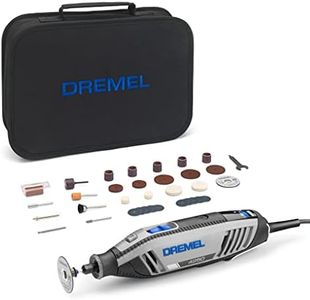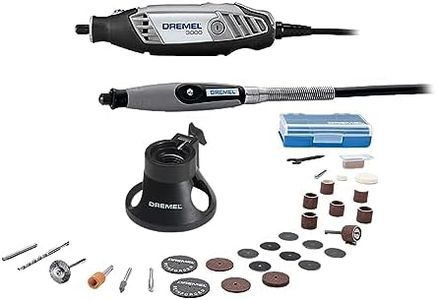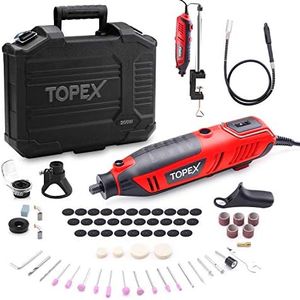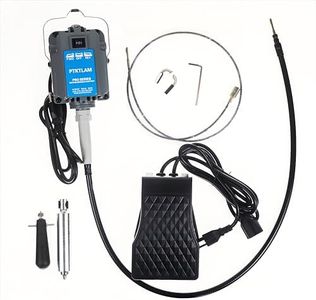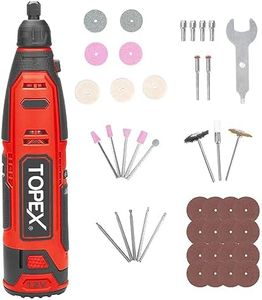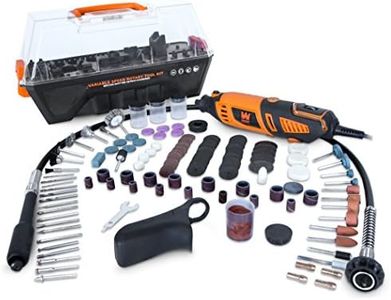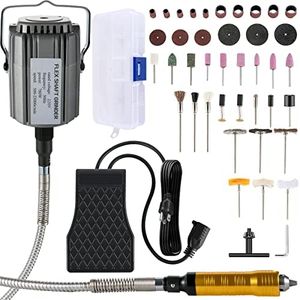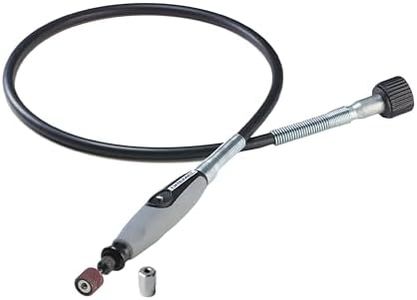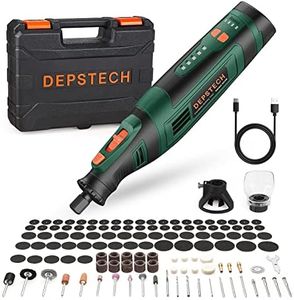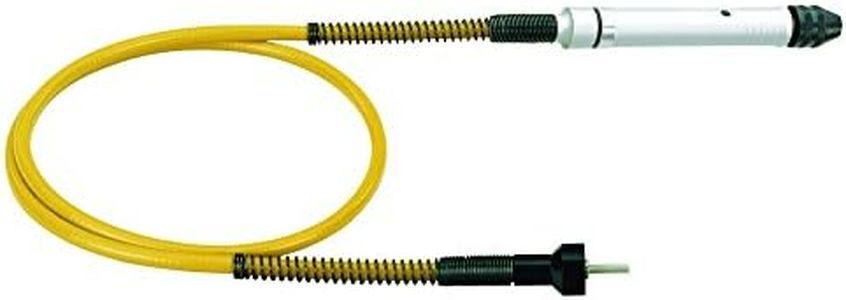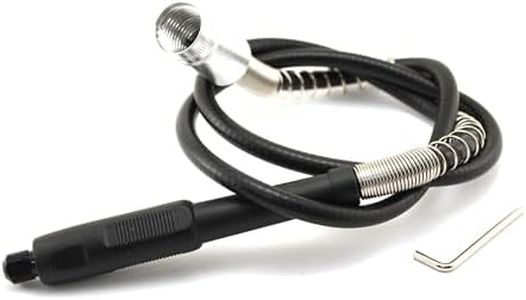We Use CookiesWe use cookies to enhance the security, performance,
functionality and for analytical and promotional activities. By continuing to browse this site you
are agreeing to our privacy policy
10 Best Flex Shaft Rotary Tools
From leading brands and best sellers available on the web.Buying Guide for the Best Flex Shaft Rotary Tools
Choosing the right flex-shaft rotary tool will make your crafting, sanding, engraving, polishing, or DIY repair work much easier and more efficient. Instead of being overwhelmed by the wide range of options, focus on understanding what you need the tool for—think about the type of materials you'll work with, how often you plan to use it, and which tasks are most important for your projects. This will help you prioritize the features that matter most to you, leading you to a product that's comfortable, effective, and reliable for your personal use.Power (Motor Wattage or Amperage)Power, measured in either watts or amps, tells you how strong the tool’s motor is and how easily it can handle tough tasks. Higher power means the tool can cut, carve, or grind through harder materials without bogging down, while lower power works just fine for light engraving or finishing jobs. If your projects involve soft materials or delicate work, you can rely on a lower power tool, as it’s lighter and easier to maneuver. If you plan on tackling metal work or large items, opt for a higher power rating to avoid frustration and potential damage to the tool.
Speed (RPM Range)The speed of a rotary tool, measured in revolutions per minute (RPM), greatly affects its versatility and performance. Some tools have a single speed, while others offer variable speed settings. Low speeds (often under 10,000 RPM) are best for polishing and cleaning, medium speeds (10,000–20,000 RPM) suit sanding and shaping, and high speeds (over 20,000 RPM) handle cutting or carving hard materials. Consider what you will use the tool for most often—a variable speed model offers maximum adaptability, while a single-speed tool is simpler if your needs are basic.
Flex Shaft LengthThe length of the flex shaft gives you reach and freedom while working. A longer shaft provides more flexibility to work on larger items or reach awkward spots, while a shorter shaft might feel easier to control for detailed, close work. Think about your workspace and the size of items you plan to work on—if you're mostly doing small, intricate projects, a shorter shaft keeps you precise, but if you want to work across surfaces or need more room to move, look for a longer flex shaft.
Ergonomics and GripErgonomics refers to how comfortable and natural the tool feels in your hand. A good grip is key for using the tool for longer periods without discomfort or fatigue. Some flex-shaft tools have slim, lightweight handpieces that are easier to hold, while others are bulkier. If you have smaller hands or expect to spend a lot of time on detail work, look for a tool with a narrow, soft-touch grip to avoid strain. Try to pick up or visualize the tool in your hand and imagine long sessions of use—comfort really matters.
Accessory CompatibilityAccessory compatibility means what kinds of bits, attachments, and accessories can be used with the tool. Some rotary tools accept only proprietary accessories, while others have a standard-sized chuck or collet, allowing for a wider range of third-party bits. If you want the most flexibility or already own a collection of rotary tool bits, make sure the tool supports common sizes (often 1/8 inch). Consider your main tasks—if you want to try cutting, grinding, polishing, and sanding, make sure the tool comes with a good starter set and can accept additional attachments as your needs grow.
Noise and VibrationNoise and vibration levels affect your comfort, especially during long sessions. Some rotary tools are quieter and vibrate less, which is helpful if you have sensitive ears or need to use the tool indoors or in shared spaces. Models with lower noise and smoother operation enhance control, particularly for fine detail work. If possible, check reviews or test the tool to ensure it won't become uncomfortable, and consider this factor if you’ll use it frequently or in noise-sensitive environments.
